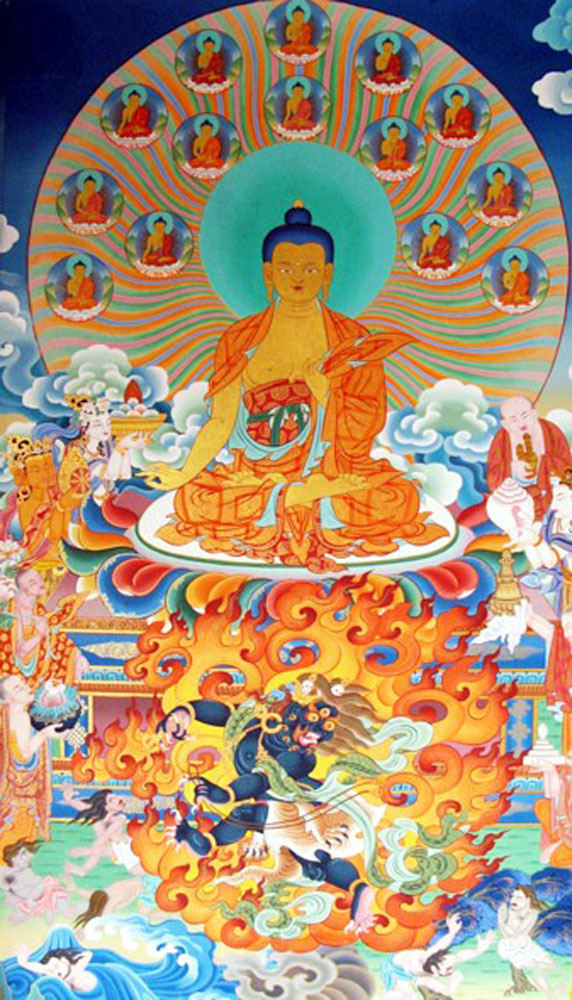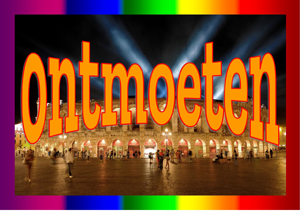Greg Suffanti
QFWF, February 19 2019; March 18, 2020; February 27 2021; February 16 2022
Losar, Chötrul Düchen, Saka Dawa, Chokor Düchen, Lhabab Düchen

The fifteen Days of Miracles start from the first day of the Tibetan new year, Losar (February 5th 2019, and goes until the fifteenth day, Chotrul Düchen, which is also called the Day of Miracles (February 19th 2019).
The 15 day prayer festival is called Monlam Chenmo. Chotrul Düchen is the most important day of the festival. This period commemorates the special time when Guru Shakyamuni Buddha showed miraculous powers in order to subdue the Six Founders, who lacked faith in him, and to inspire more faith in his own followers. All fifteen days are merit producing days, when the merit from virtuous actions performed on these days is multiplied by 100 million, as cited by Lama Zopa Rinpoche from the vinaya text “Treasure of Quotations on Logic”.(1) Of course, this means that negative actions done during this period are multiplied as well!
Chotrul Düchen is one of the four great Buddhist holy days observed by Tibetan Buddhists and always takes place on the fifteenth day of the first lunar month in the Tibetan calendar.
There are four major Tibetan Buddhist holy days in which events in the life of the Buddha are venerated:
- Chötrul Düchen, known as ‘the fifteen days of miracles’, starting from the first day of the Tibetan new year, called Losar, and culminating two weeks later with the festival of Chötrul Düchen.
- Saka Dawa, in which the birth, death, and enlightenment of Buddha Shakyamuni are celebrated.
- Chokor Düchen celebrates the Buddha’s ‘first turning of the wheel of Dharma’, in which he taught the Four Noble Truths, in Sarnath, India. (2)
- Lhabab Düchen, which falls this year on 19 November 2019, recollects Shakyamuni’s return to earth after visiting and teaching his mother in Tushita heaven. (3), (4)
According to legend, the leaders of the six major philosophical schools in India challenged the Buddha to display his miraculous powers. Shakyamuni Buddha then performed one miracle each day for fifteen days, defeating his opponents completely.
As the important visionary and scholar Jikme Linga noted in verse,
Through the magical power of your miracles in Shravasti,
You rendered speechless the tirthika[2] teachers who,
With all their analysis and research, drunk on the wine of indulgence,
Had become oppressive and extreme.
In the final contest they were humbled, their prestige all drained away,
As you triumphed through ‘the four bases of miraculous powers’.[3]

At Maitreya Instituut in Amsterdam where I’m a volunteer, we will celebrate the Day of Miracles this year on the 2nd of March 2018. To mark the occasion we will recite the Shakyamuni Buddha Guru Puja. Offerings of food and flowers will be made, and the food offerings will be shared at the end of the puja with everyone in attendance. The Shakyamuni Buddha Guru Puja honors the historical Buddha and the puja even has a heading relating stories from the lives of the Buddha: “Homage Recollecting the thirty-four Birth Stories in the Jataka-mala of Aryasura.”
There will also be a reading from Lama Tsong Khapa’s “In Praise of Dependent Origination”.
Also on this day, His Holiness the Dalai Lama will give a short teaching from the “Jataka Tales,” in which stories of the life of the Buddha are chronicled, as well as a teaching from Lama Tsong Khapa’s “In Praise of Dependent Origination”. This classic work of 58 verses praises the Buddha and his wisdom of dependent arising, and the fact that this view is unique among religious traditions and deservedly should be regarded as “the king of reasonings ”.(5) His Holiness will teach at the Main Tibetan Temple in Dharamsala, India.(6) Tibetans make elaborate offerings of butter lamps and light them as an offering to Shakyamuni Buddha on the Day of Miracles.
- hayagriva.org.au/2018/02/24/holy-day-of-miracles-chotrul-Duchen-1_march-2018/
- dnkldharma.org/classes-events/buddhist-holidays.html
- kopanmoanastery.com/about-kopan/monastic-events/buddha-s-special-days
- rigpawiki.org/index.php?title=Chotrul_Duchen
- thubenchodron.org/buddhism/06-philosophy/in-praise-of-dependent-origination-with-dagri-rinpoche/
- tushita.info/events/chotrul-Duchen/
Notes
[1] Source: Chotrul Düchen
[2] proponent of non-Buddhist views
[3] 1. Intention, 2. Diligence, 3. Attention, 4. Discernment (2)
[4] Source: Painting of Lama Tsongkhapa from Big Love: The Life and Teachings of Lama Yeshe National Musseet Copenhagen










